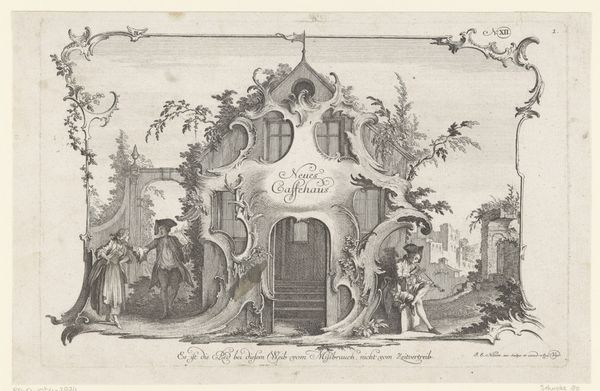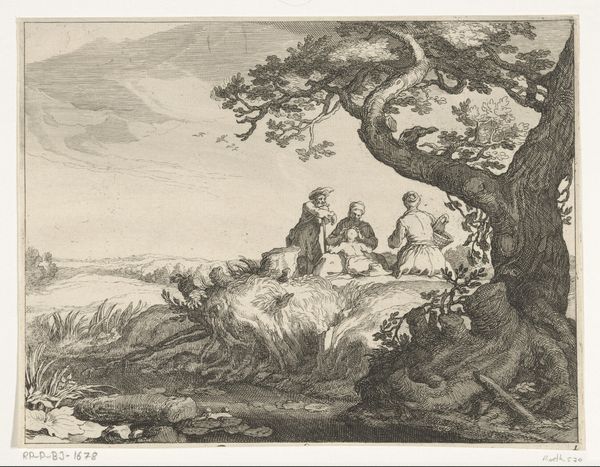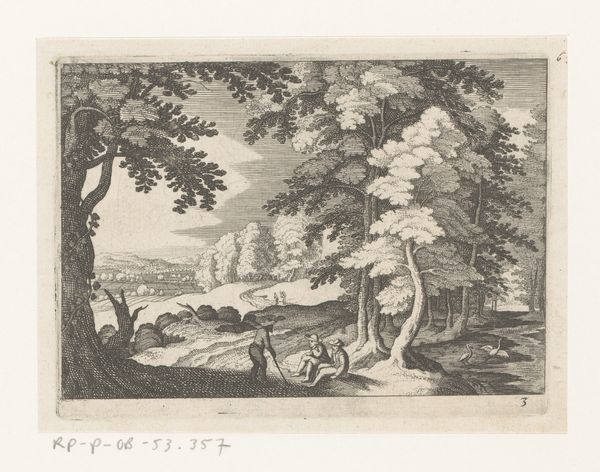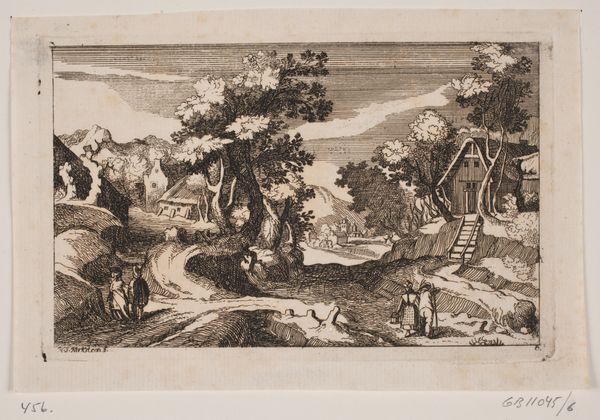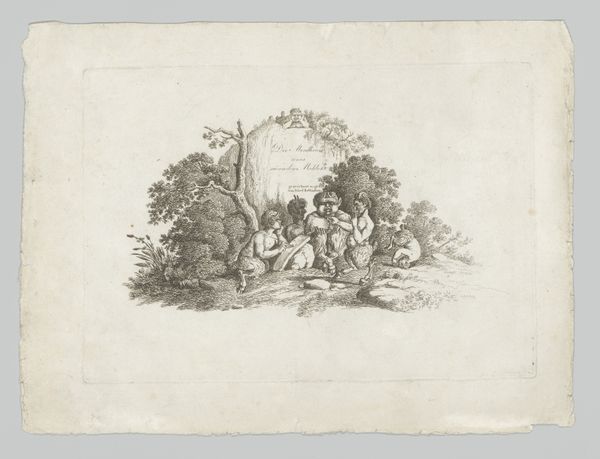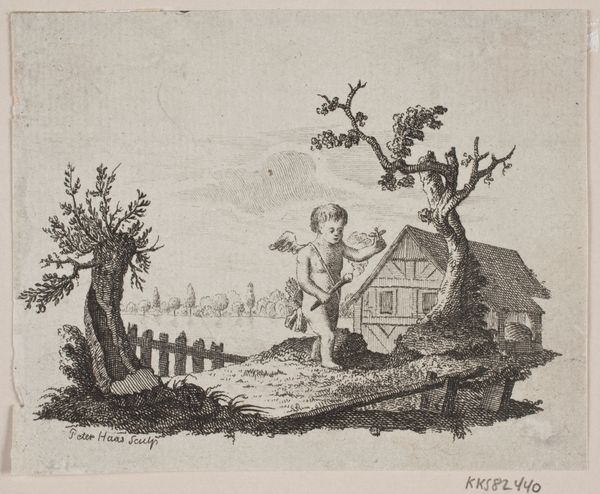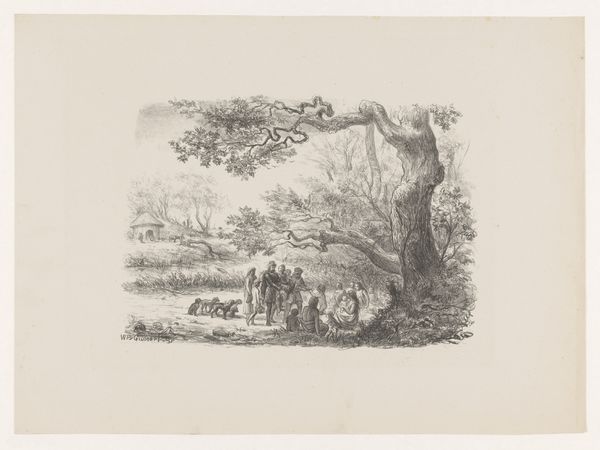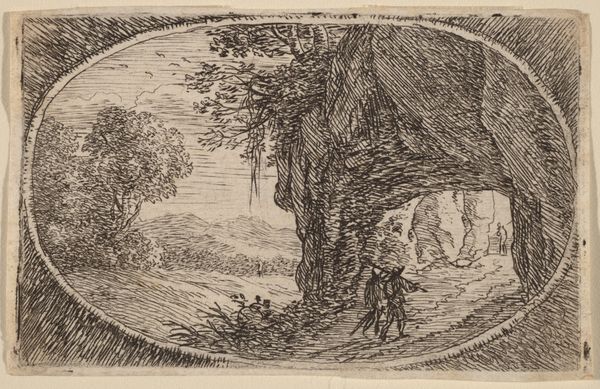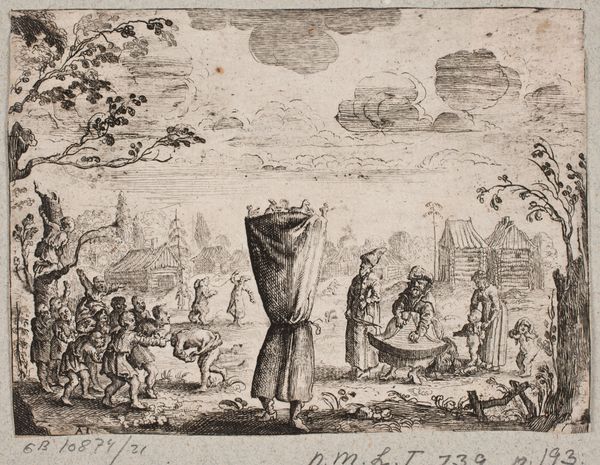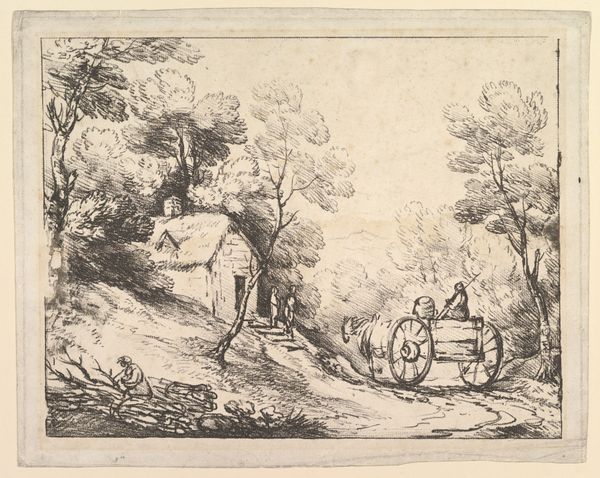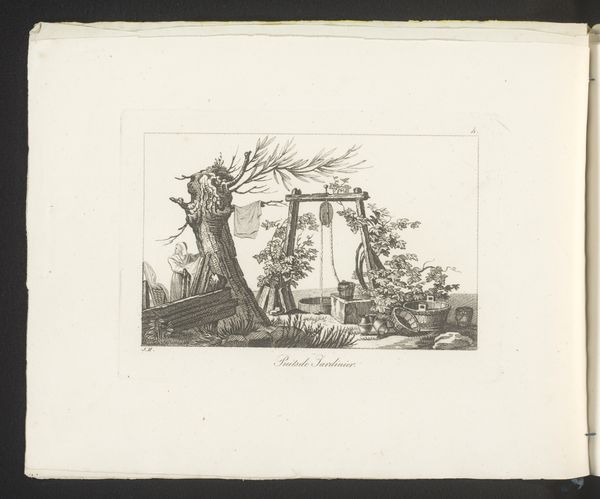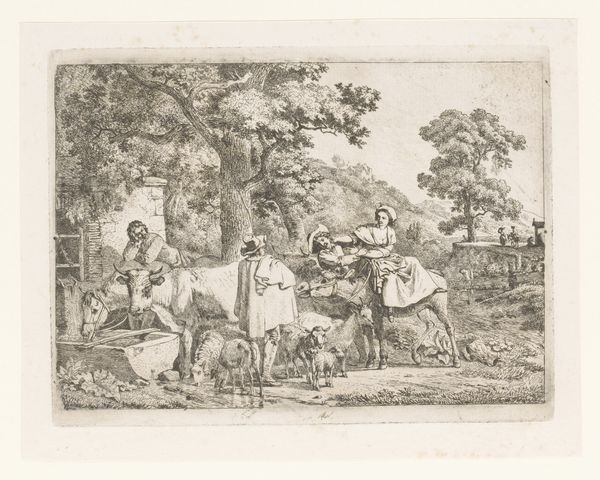
#
aged paper
#
toned paper
#
old engraving style
#
sketch book
#
personal sketchbook
#
old-timey
#
sketchbook drawing
#
storyboard and sketchbook work
#
sketchbook art
#
watercolor
Dimensions: height 172 mm, width 284 mm
Copyright: Rijks Museum: Open Domain
Johann Esaias Nilson created this print, “Coffee and Tea House,” using etching. Here, we see that coffee, tea, and tobacco are elevated from mere commodities into cultural practices that create a specific kind of social space. Notice the Rococo design with its fanciful and asymmetrical ornamentation, which reflects the tastes of the upper classes during the 18th century in Germany. Nilson was active in Augsburg, a city known for its printing industry, and this print would have been part of a larger visual culture that helped to shape social norms around leisure and consumption. The presence of children in the image suggests that these spaces were not exclusively for adults but were also places where social values were transmitted to the next generation. To better understand this image, we might research the history of coffee and tea houses in Europe, the social history of tobacco use, and the role of prints in shaping cultural values. As art historians, we can reveal the complex ways in which art reflects and shapes the society in which it is produced.
Comments
No comments
Be the first to comment and join the conversation on the ultimate creative platform.
